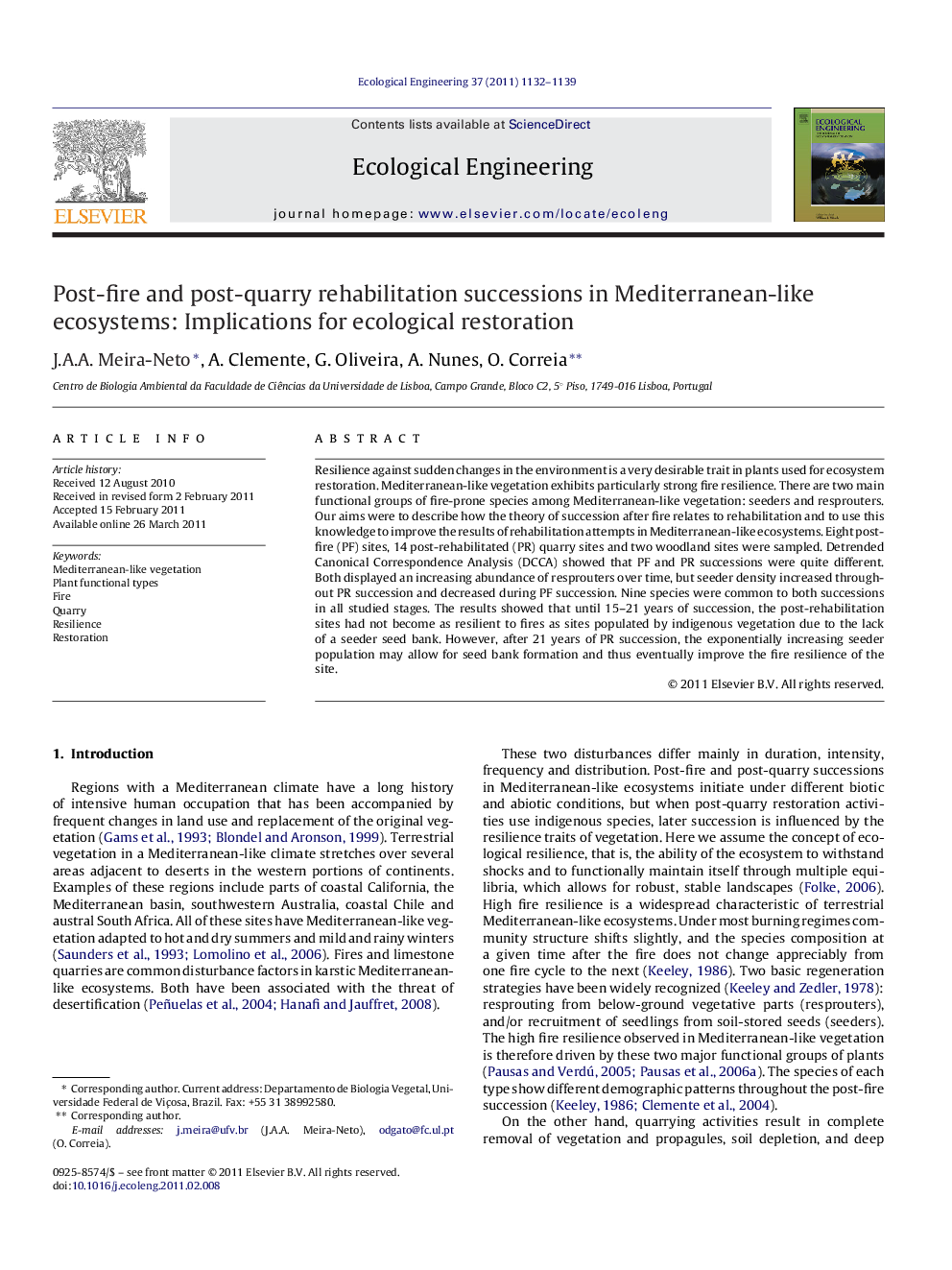| Article ID | Journal | Published Year | Pages | File Type |
|---|---|---|---|---|
| 4390388 | Ecological Engineering | 2011 | 8 Pages |
Resilience against sudden changes in the environment is a very desirable trait in plants used for ecosystem restoration. Mediterranean-like vegetation exhibits particularly strong fire resilience. There are two main functional groups of fire-prone species among Mediterranean-like vegetation: seeders and resprouters. Our aims were to describe how the theory of succession after fire relates to rehabilitation and to use this knowledge to improve the results of rehabilitation attempts in Mediterranean-like ecosystems. Eight post-fire (PF) sites, 14 post-rehabilitated (PR) quarry sites and two woodland sites were sampled. Detrended Canonical Correspondence Analysis (DCCA) showed that PF and PR successions were quite different. Both displayed an increasing abundance of resprouters over time, but seeder density increased throughout PR succession and decreased during PF succession. Nine species were common to both successions in all studied stages. The results showed that until 15–21 years of succession, the post-rehabilitation sites had not become as resilient to fires as sites populated by indigenous vegetation due to the lack of a seeder seed bank. However, after 21 years of PR succession, the exponentially increasing seeder population may allow for seed bank formation and thus eventually improve the fire resilience of the site.
